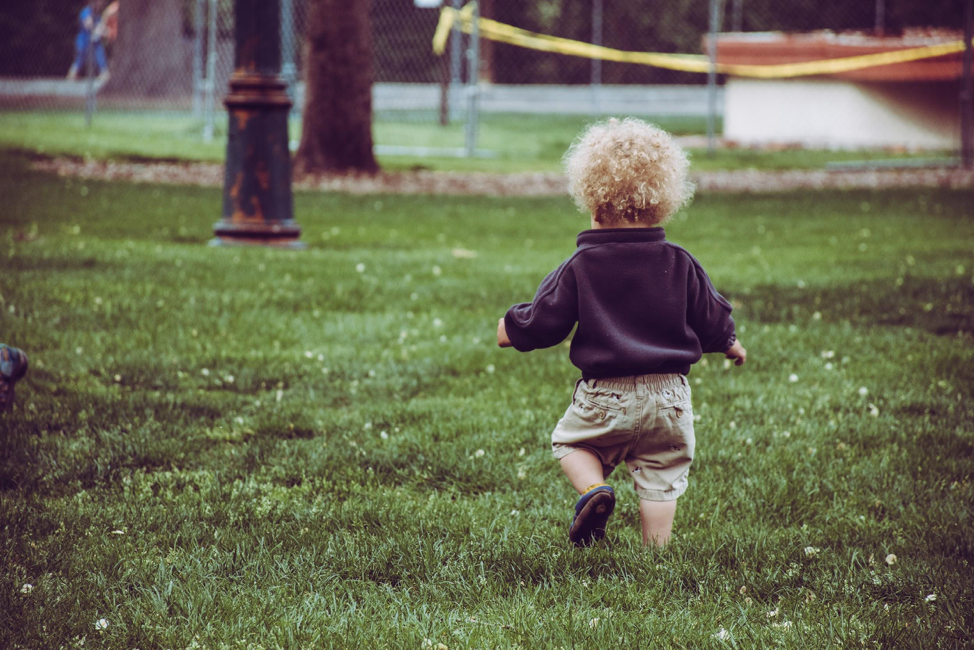Blog — Walkie Chalk
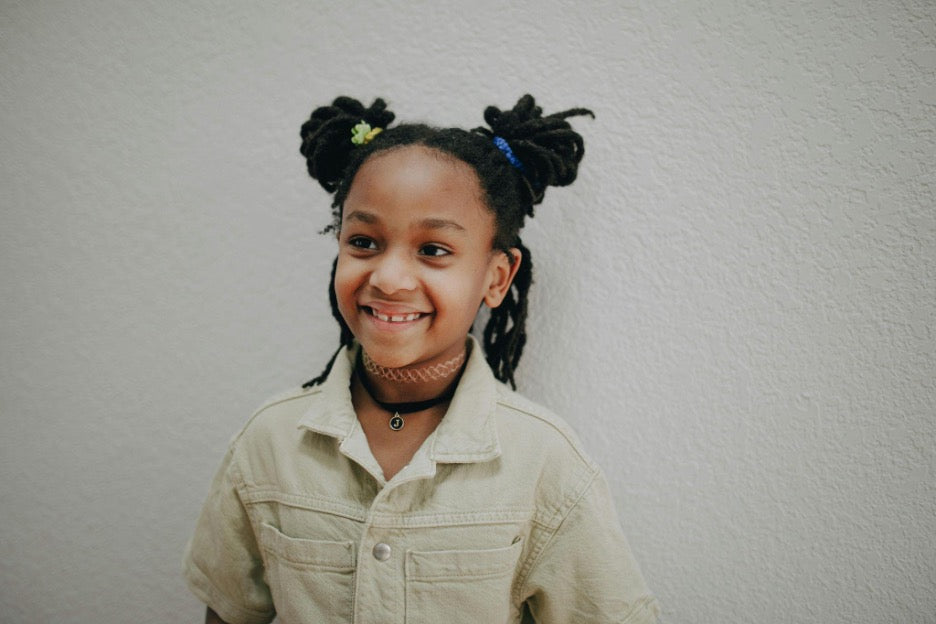
Raising the Next Leader: Parenting Tactics That Build Authentic Confidence and Capability
Leadership doesn’t start on a stage—it starts at home. Not with lectures, but in the quiet, consistent ways you respond, guide, and model. When your child faces conflict, do they see control or curiosity? When they fail, do they see shame or self-reflection? You’re not raising a résumé. You’re shaping how they handle responsibility, power, and people—every single day.
Model What You Want Them to Mirror
You don’t teach leadership by talking about it. It happens in the moments when they’re watching you—noticing how you handle frustration, or how you treat a stranger who gets your order wrong. Children learn empathy by watching you, especially during times of stress, not just comfort. Modeling accountability and repair builds leadership more than any lecture ever could. If you yell, show them what an apology sounds like. If you lose your cool, explain what you’ll do differently next time. They’re always watching—and the leadership they absorb begins with the behavior you repeat.
When Education Meets Leadership Potential
Your child’s leadership spark may not ignite in your living room—it might light up inside a lesson plan. Especially when that plan is grounded in care, urgency, and relevance. Evaluate online healthcare degree program options together—not for the sake of college planning, but to start the deeper conversation: Who am I responsible to? What problems am I equipped to solve? Programs rooted in health, service, or systems-thinking naturally push teens to connect skill to stewardship. And that, more than charisma or charm, is what separates leaders from opportunists.
Let the World Stretch Them
Leadership is born at the edge of familiarity. A child won’t grow if they only see what they already know. That’s why exposure to other cultures is more than a feel-good ideal—it’s a strategy. Whether it’s trying new food, attending a local festival, or hearing stories from people who live differently, these moments create spaciousness inside them. That spaciousness becomes discernment. Leaders without empathy create followers. Leaders with empathy create change. And that begins when your child realizes the world is bigger than their own experience.
Step Back So They Can Step Up
It’s tempting to jump in. To tie the shoes, pack the lunch, solve the argument. But that instinct—while loving—can rob them of what they need most: the courage to figure things out. Moments of autonomy in small decisions lay a foundation that no pep talk can match. Picking their outfit, negotiating weekend plans, solving a sibling standoff—all of it is messy and worthwhile. They won’t always get it right, and that’s the point. What they’ll remember isn’t perfection. It’s the power of trying.
Use Play to Teach Power and Pause
Play isn’t filler. It’s training ground. Somewhere between tag and tea parties, kids try on leadership in ways that stick.Social play teaches emotional regulation, helping them learn when to speak up, when to listen, and how to navigate frustration without meltdown. They experiment with roles, take turns holding authority, and test influence in real time. These aren’t just cute interactions—they’re reps. They’re how future leaders learn to pause, adapt, and recover. So lean into the chaos of play. It’s doing more work than you think.
Give Them the Gift of Trust
They know when you're faking it. If the responsibility you hand off is more about busywork than belief, they'll feel it. That's why completing small tasks builds pride in a way rewards alone can’t. Feeding the dog. Locking the door. Prepping their own school bag. It’s not just about the task—it’s about who they become by doing it. Leaders don’t form from praise alone. They form when someone trusts them before they’ve proven they’re ready—and stays close while they rise to meet that trust.
Don’t Lead with Fear
Fear gets compliance. It doesn’t get buy-in. Rules barked out of frustration might create obedience, but they won’t foster the kind of self-leadership that lasts. Kids need structure, yes—but not at the cost of connection. Non-coercive parenting fosters trust that makes your influence stick, even when they’re no longer under your roof. That doesn’t mean permissiveness. It means clarity without cruelty. Boundaries without shame. And accountability that invites reflection, not retribution. That’s the kind of leadership that outgrows childhood and stays intact in adulthood.
You don’t need to raise a prodigy. Just someone who holds power with care. That means less performance, more principle. Less perfection, more presence. Show them what steady looks like. And let leadership grow from there.
Discover a new way to play with Walkie Chalk – the innovative sidewalk chalk holder that brings creativity to life for all ages! Join our mailing list for exclusive deals and updates!
Beyond the Bell: How Parents Can Fuel Learning Outside the Classroom
From the moment school lets out, a new kind of classroom opens—one with messy kitchens, backyard chalkboards, and bedtime books read under the covers. It’s in these spaces that learning often deepens, fueled by rhythm, curiosity, and the subtle power of parental presence. Whether your child is building sentences, solving puzzles, or chasing frogs in the garden, your role isn't to replicate school—it's to layer experience with meaning. Let’s explore how to do just that.
Read Aloud Together
There’s a certain kind of magic in a parent’s voice—especially when it’s narrating the mischief of a storybook fox or the wonder of a distant planet. Reading aloud doesn’t just create bonding moments; it actively builds vocabulary and comprehension. But don’t treat it like a chore or a skill drill. Follow your child’s giggles. Linger on funny words. Re-read the same book five nights in a row if they beg you to. The predictability and sound of your voice weaves safety into complexity. And it teaches them that books are places to return, not just things to finish.
Create With AI, Not Just Watch
For older kids and teens, creativity and technology can be fused in thrilling ways. Using an AI video generator for education, kids can turn stories into short films—transforming language arts into screenwriting, or social studies into documentary making. It’s not just screen time—it’s synthesis. When they animate ideas, they take ownership of them. Don’t worry if the video is glitchy. The point isn’t perfection—it’s practice. Storytelling, sequencing, editing, perspective—those are the real subjects being studied.
Walkie Chalk Sidewalk Stories
Some of the best lessons aren’t found in textbooks—they’re drawn on sidewalks. With something as simple as Walkie Chalk, kids can turn driveways into giant canvases. One moment they’re tracing letters. The next, they’re diagramming their dream playground or building a backyard treasure map. The upright chalk tool gives them independence, physical engagement, and room to dream big. Learning to write becomes an act of movement. Spelling becomes storytelling. And you? You just handed them a tool and made room.
Homework Routine Matters
Evenings can go sideways fast. One lost folder, one skipped snack, and suddenly everyone’s melting. That’s where routine comes in. A consistent after-school rhythm of structured schedules ease focus without turning your living room into a second-grade classroom. Find your groove—maybe it’s 30 minutes of downtime, then a snack, then a calm place to tackle homework. Use timers. Turn off the TV. Keep supplies within reach. The more predictable the flow, the fewer battles you’ll fight. Kids don’t need school at home—they need a home that respects the work school asks of them.
Ask Open‑Ended Questions
“How was your day?” dies on the vine. Try this instead: “What was something weird that happened today?” or “If your math worksheet had a theme song, what would it be?” Questions that spark curiosity through deep questions invite storytelling, pattern recognition, and synthesis—all skills they’re building at school. But these questions work because they’re playful, not probing. You’re not testing them. You’re giving them a stage. And when they talk, don’t interrupt. Let the pauses breathe. That silence? It’s thinking in real time.
Learning Through Games
Game night isn’t just fun—it’s formative. From Uno to Scrabble to made-up board games with glitter glue, games combine fun with executive functions. Kids learn to plan, hold rules in their head, shift strategies, and stay flexible under pressure. That’s the backbone of problem-solving, and it transfers to everything—from math tests to friendship dramas. So skip the flash cards for once. Deal the cards. Roll the dice. Let losing teach them grace and winning teach them generosity.
Parent‑Led STEM at Home
You don’t need a PhD to be your kid’s favorite science teacher. Start simple: mix baking soda and vinegar, grow beans in a jar, or design a paper plane contest. What matters isn’t the content—it’s the habit of tinkering. And with a bit of structure, you can reinforce classroom STEM at home in ways that feel like play. Make a mini weather station. Track moon phases on the fridge. Or let them teach you something they learned. When you show interest, you model that learning never stops.
Supporting your child’s learning doesn’t require reinventing yourself. You’re not trying to be their teacher—you’re just keeping the soil fertile between school bells. You read to them not to prep for a test, but to let language wrap around their brains like a warm blanket. You ask weird questions, make silly sidewalk art, and yes, even let them mess with AI tools—because you know that learning sticks best when it’s wrapped in delight. So let the classroom fade for a while. The bell has rung. Now the real lessons begin.
Discover a new way to play with Walkie Chalk – the perfect outdoor toy for all ages that lets you create big, colorful art without the mess. Join our mailing list for exclusive deals and updates!
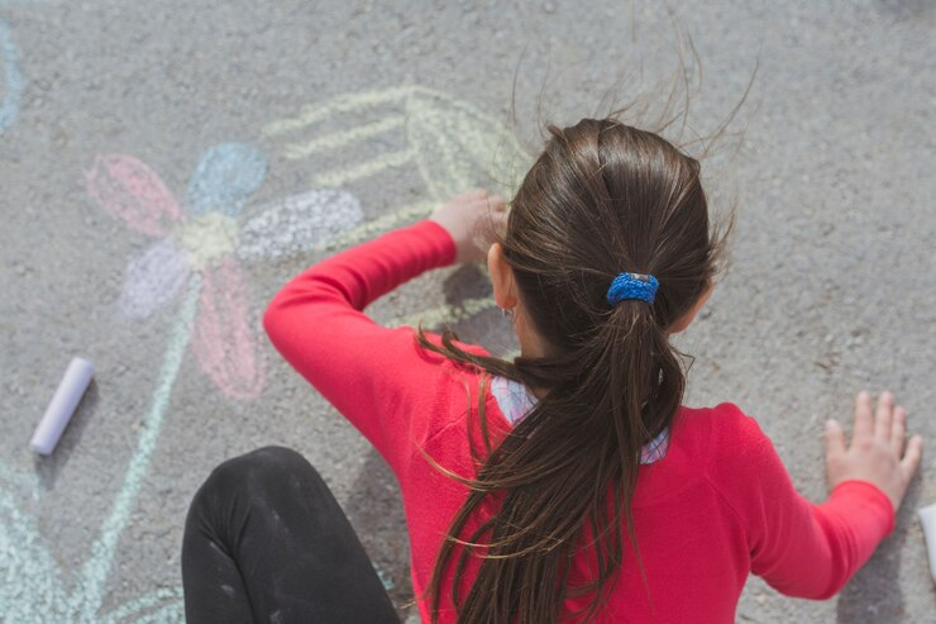
Smart Summers: Helping Kids Learn and Have Fun Without Burning Out
(Thank you to our great friend, Lillian Brooks, for her blog post contribution. Enjoy!)
Summer doesn't have to be a three-month learning blackout. It's tempting to let your kids drift into full-on vacation mode with no schedule, no goals, and way too much screen time. But there’s a sweet spot—one where they can stay sharp, build new skills, and still feel like they’re getting a real break. If you're trying to find that balance between educational growth and just letting your kids be kids, you’ve got more options than you think.
Lean Into Their Curiosity
Kids ask questions constantly—about the sky, bugs, how the microwave works, why dogs tilt their heads. Summer’s the perfect time to lean into that curiosity instead of brushing it off. Try keeping a question journal and then choosing one or two to explore each week, either through books, videos, or a field trip to the library or museum. When you encourage their natural wonder, you’re helping them build research and reasoning skills without them even realizing they’re “learning.”
Use Sidewalk Chalk to Blend Learning and Play
Sidewalk chalk from Walkie Chalk isn’t just for hopscotch and doodles. It’s a sneaky and brilliant way to work learning into a playful afternoon outside. You can turn your driveway into a giant spelling board, number maze, or creative writing space—have your child create a short story by drawing it panel by panel like a comic strip. They’ll be using literacy, storytelling, and even fine motor skills, but all they’ll remember is that it was fun and colorful.
Make Reading a Ritual, Not a Requirement
If reading feels like a chore, kids will treat it like one. But if you turn it into something cozy, communal, and low-pressure, they’re far more likely to dive in willingly. Create a daily reading window where everyone in the house grabs a book and just hangs out, or build a blanket fort and have themed reading nights. The key is to model enjoyment—if you look like you’re having fun reading, they’ll want in on that magic too.
Create DIY Flashcards for Better Learning
Making your own flashcards gives you the freedom to tailor the content specifically to what your child needs help with, whether it's tricky math facts or science vocabulary. You can incorporate colors, images, or jokes that make the information stick, and the process of creating the cards together actually boosts memory retention. Once you’ve made them, save the flashcards as PDFs so they’re easy to pull up on a tablet, phone, or laptop whenever a learning moment pops up—click here for more info on converting and printing PDFs.
Let Boredom Do Some Work
You don’t need to schedule every second of their summer. In fact, a little boredom can go a long way. When kids aren’t constantly entertained, their brains start firing in new ways—they build worlds, make up games, dive into new hobbies. By resisting the urge to fill every gap with activities or screens, you’re giving them space to explore self-direction and creative problem-solving.
Build Mini Projects Around What They Love
Instead of dragging your child through a curriculum they don’t care about, build around their interests. If they love animals, create a mini summer project where they “adopt” a species, learn about its habitat, and make a shoebox diorama or fact book. For kids who are into sports, have them calculate stats or design their dream stadium. You’re still hitting educational goals—reading comprehension, math, critical thinking—but you’re doing it in a way that actually matters to them.
Go Local and Explore Hidden Learning Spots
Most towns have more educational opportunities than you might realize. Small science centers, community gardens, historical walking tours—these places are quiet gold mines for hands-on learning. Let your child help plan the outing: look it up, find directions, check opening hours, and make a list of questions to ask while you’re there. It puts them in the driver’s seat, and that ownership makes a difference in how they process what they experience.
Cook Together and Let Math Take the Lead
Cooking is underrated as an educational tool. It’s basically real-life math, science, and reading all rolled into one messy, delicious activity. Let your child help measure ingredients, set timers, and read recipes out loud. Then challenge them to double a recipe or convert teaspoons to tablespoons—it’s not just practical math, it’s math with a clear, rewarding outcome that they’ll want to eat afterward.
No one’s saying you need to run a summer school out of your living room. But keeping a few learning-based traditions in the mix—especially ones that your kids enjoy—means they won’t have to play catch-up when fall hits. More importantly, they’ll start seeing learning not as something confined to a classroom but as something that’s alive in their everyday world. When you get that part right, summer becomes more than a break—it becomes a launchpad.
Discover a new way to play with Walkie Chalk – the innovative sidewalk chalk holder that brings creativity to life for all ages! Join our mailing list for exclusive deals and updates!
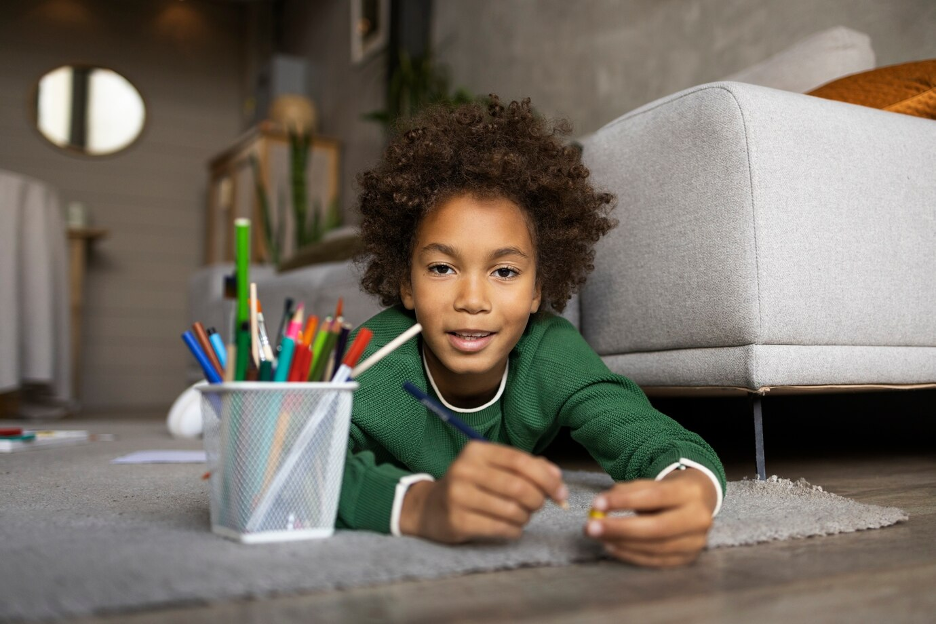
Encouraging Children to Thrive Through Creative Wellness
Encouraging Children to Thrive Through Creative Wellness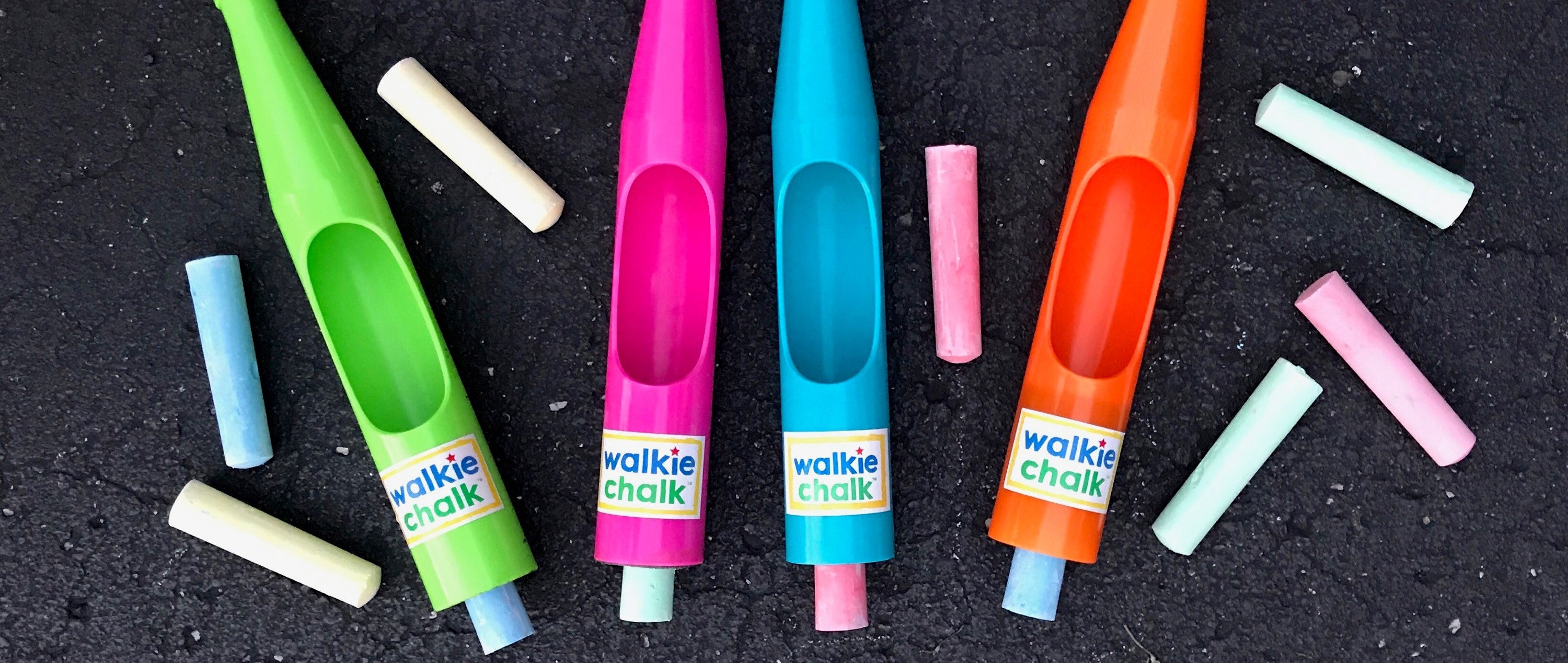
5 Ways to Get Children with Learning Disabilities Involved with the Arts
Guest Author: Lillian Brooks
If your child has learning disabilities, it’s essential to encourage them to participate in the arts. The arts can improve communication skills, grow self-confidence, and increase fitness levels. Here, the creativity experts at Walkie Chalk present five of the best options for children with learning disabilities.
1. Music
Participating in a music class or learning a musical instrument requires complete focus. As a result, music is ideal for relieving stress, teaching your children to concentrate, and helping them gain a creative outlet.
In addition, a recent survey produced by AARP found music listeners had higher scores for mental well-being, higher levels of happiness, and better cognitive function. In fact, sixty-eight percent of parents that introduced their children to music rated their child’s ability to learn new things as very good or excellent. However, this was only 50% for parents who hadn’t exposed their children to music.
2. Acting
Transferring energy to performing arts can be helpful to an active child, and acting is one of the best options. Your children can gain confidence, a sense of achievement, teamwork skills, and multiple creative skills from acting.
In addition, acting can boost your child’s communication skills. Around 86% of employees state poor communication is the main reason for workplace failures. Therefore, you should promote your child’s communication skills at a young age.
3. Painting and Drawing
Children often enjoy drawing things; when we become adults, we often stop drawing due to our busy adult lives. But drawing can relieve stress and anxiety in adults, so it’s a shame most adults forget about their painting passions.
With that said, painting is excellent for children. It helps them build confidence, develop problem-solving skills, create a shared learning experience, increase brain development, enhance senses, explore color, and convey individual ideas.
You and your child can also get outside to draw using Walkie Chalk. This fun modification to classic chalk drawing makes it easier for adults to play along. Plus, kids with sensory challenges can enjoy drawing without getting chalk on their fingers!
4. Dancing
Young children have so much energy, and dancing is one of the best ways to focus that energy. Dancing can enhance creativity, encourage socialization, increase cognitive development, and boost emotional development.
Dancing is also excellent for helping your child’s physical fitness. It improves their flexibility, overall balance, coordination, muscular strength, heart and lung condition, and spatial awareness.
5. Crafting
You’ll struggle to find a better creative outlet for your children than crafting. It can improve self-confidence, reduce overall stress, decrease anxiety, raise a child’s focus, and grow emotional development.
Crafting is also superb for teaching colors and shapes, encouraging critical thinking, building resilience, and increasing pattern recognition.
Design an Arts Room
By creating an arts room in your home, you and your children can explore the world of art in a comfortable and familiar setting. When designing your arts room, be sure to include plenty of storage for all of your supplies. And be sure to leave plenty of open space for painting, drawing, or whatever other creative pursuits you enjoy.
Not only will an arts room make your home more attractive to potential buyers, but it will also give you and your children a place to relax and express yourself. Keep track of any upgrades by keeping receipts and taking before-and-after photos because this new addition may be a valuable selling feature when you eventually choose to list your house and move.
Start Teaching Children Yourself
Teaching children is incredibly rewarding. You may find a passion for teaching children arts and crafts when you share the benefits with your children. If so, consider teaching your arts and crafts lessons to children of all ages and backgrounds.
You can work as a self-employed teacher, but consider registering your new teaching business as a limited liability company. It’ll offer you more flexibility, less paperwork, and various tax benefits. If you’re not sure how to start an LLC, use a formation service to avoid costly legal fees.
Get Children Involved in the Arts Today
While the arts are great for helping everyone to get in touch with their own creativity, they can be especially fantastic for children with learning difficulties because they give them an outlet in a world that otherwise doesn’t always seem to take their feelings and perspectives into consideration. You may even decide to start your own business teaching art to children!
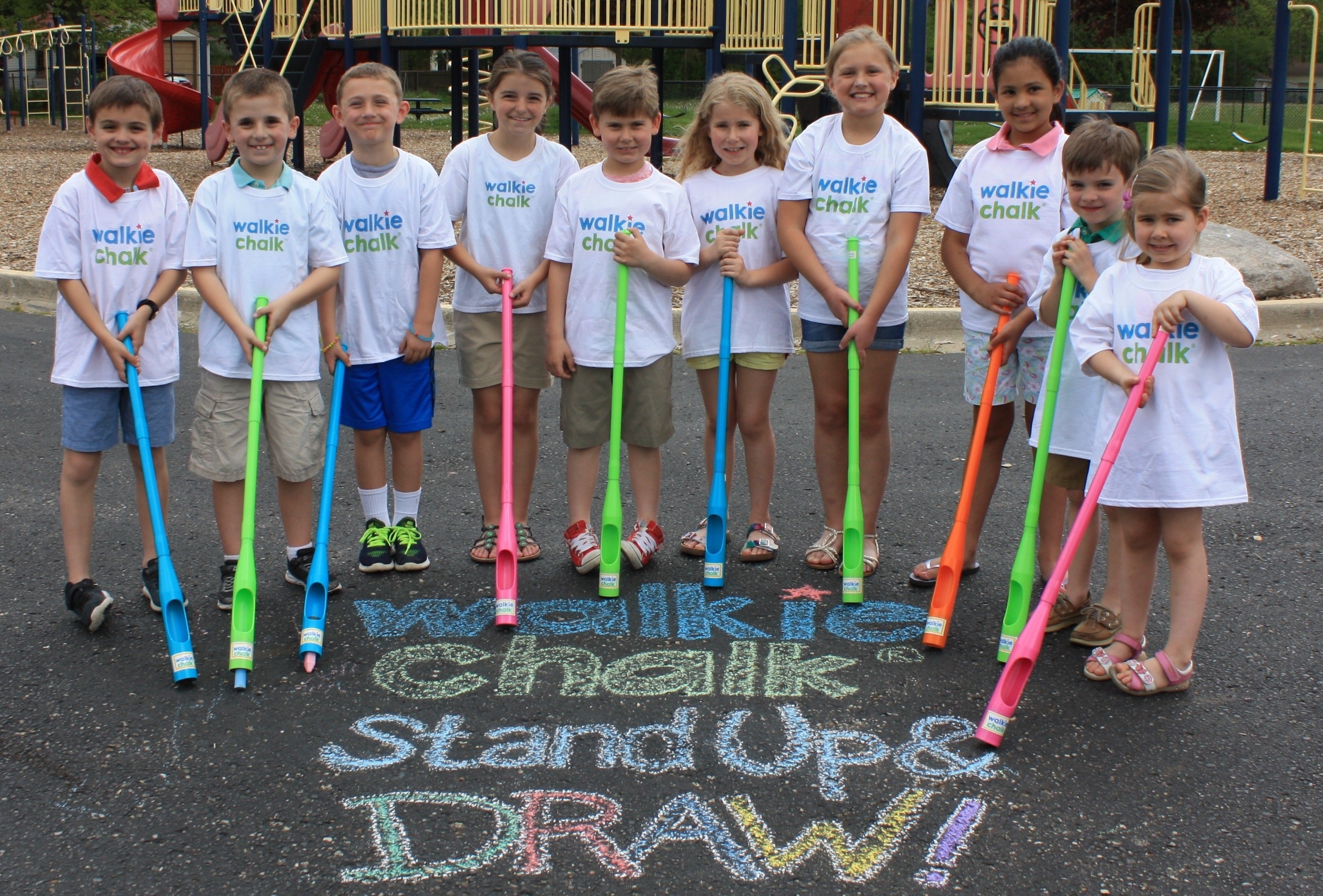
Our Favorite Outdoor Summer Toys
Our Favorite Outdoor Toys- Chalk, Scooters, Bubbles and More!
The Benefits of the Arts and How to Get Involved
If you want to help expand the mind of your child then you should consider infusing the arts into their lives. By playing music, painting pictures, and expressing themselves artistically, kids can have more fulfilled lives and you never know where the hobby could take them!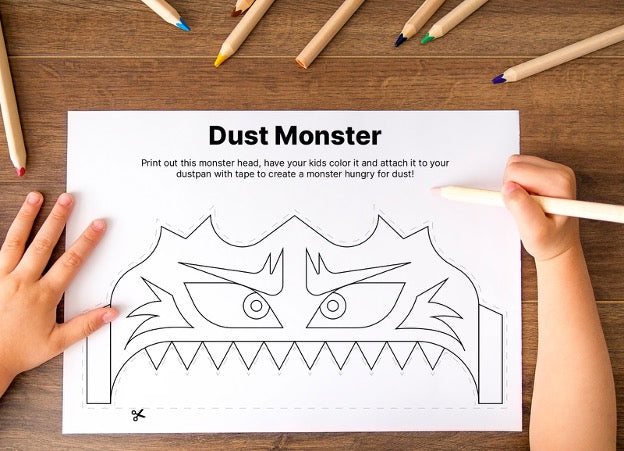
How to Teach Your Kids to Clean (+Printable Games to Help Teach Them)
After a long day working, running the household or completing errands, the last thing you want is to put your hand down on the counter and feel something sticky on the surface. But for many parents? Cleaning up after the kids is part of the job.
Luckily, there are ways to ease the burden of cleaning and teach your kids to share the load. By showing them that cleaning can be fun, quick and painless, they can pick up clean habits that will make mopping up a spill or folding their laundry second nature rather than a chore.
One way to teach kids not to fear cleaning is by playing cleaning games with them while they’re still learning. Check out this list of fun games that can help you build a culture of cleanliness in your home. Take a look!
The Clean Lantern

Link to download this mockup image.
Turn your kids into a superhero who is on a mission to find and defeat the evil Dust Bunny. Create a cape using a sheet, then use this printable superhero eye mask and badge to turn your kids into the Clean Lantern. Challenge them to fight evil using their mops and washcloths.
Laundry Room Races
Once the laundry is finished and ready to be folded, line your kids up at a starting line and have them race to get their clothes folded, taken to their rooms and put away. There’s nothing like a little friendly competition to get chores done. For added fun: have them shoot their socks into the laundry bin like a basketball before they can move on.

Link to download preview image.
Chores and Ladders
Give each child a token such as a coin or bottlecap and use this printable game board to make cleaning a game of chance. Line up at the starting line and roll a 6-sided die, then move the number of spaces indicated and complete the corresponding task. The game board even includes blank spaces for you to leave blank so your kids can get off the hook, or write in house-specific chores.
Sprinkler Time
If there’s an outside mess to be cleaned up — chalk on the driveway, anyone? — make it more fun by playing games with sprinklers or a hose. Put on bathing suits, turn on the hose and have fun spraying each other while you clean up chalk or wash the car.
Link to download preview image.
Dust Monster
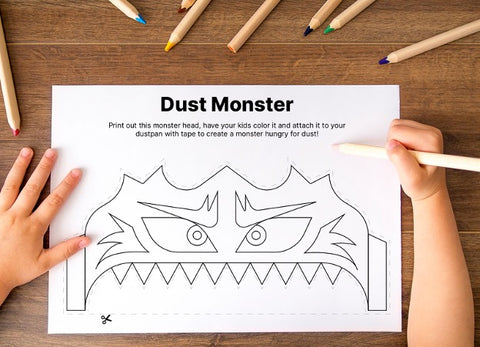
Make sweeping more interesting by turning the dustpan into a monster that is hungry for dirt and dust. Print out the dust monster printable, have your kids color it in then attach it to your dustpan with tape. Every time your kids sweep dirt into the pan, it’ll look like the dust monster is eating it up.
Cleaning Karaoke
Turn your cleaning day into a concert while mopping, sweeping or dusting. Use the broomstick, mop handle or spray bottle as a microphone and sing along to your favorite pop hits. Bonus points if you dress up like a diva!
At the end of the day, creating a culture of cleanliness at home means making it so your kids don’t fear cleaning. Make chores fun for them by making it a family affair that they look forward to.
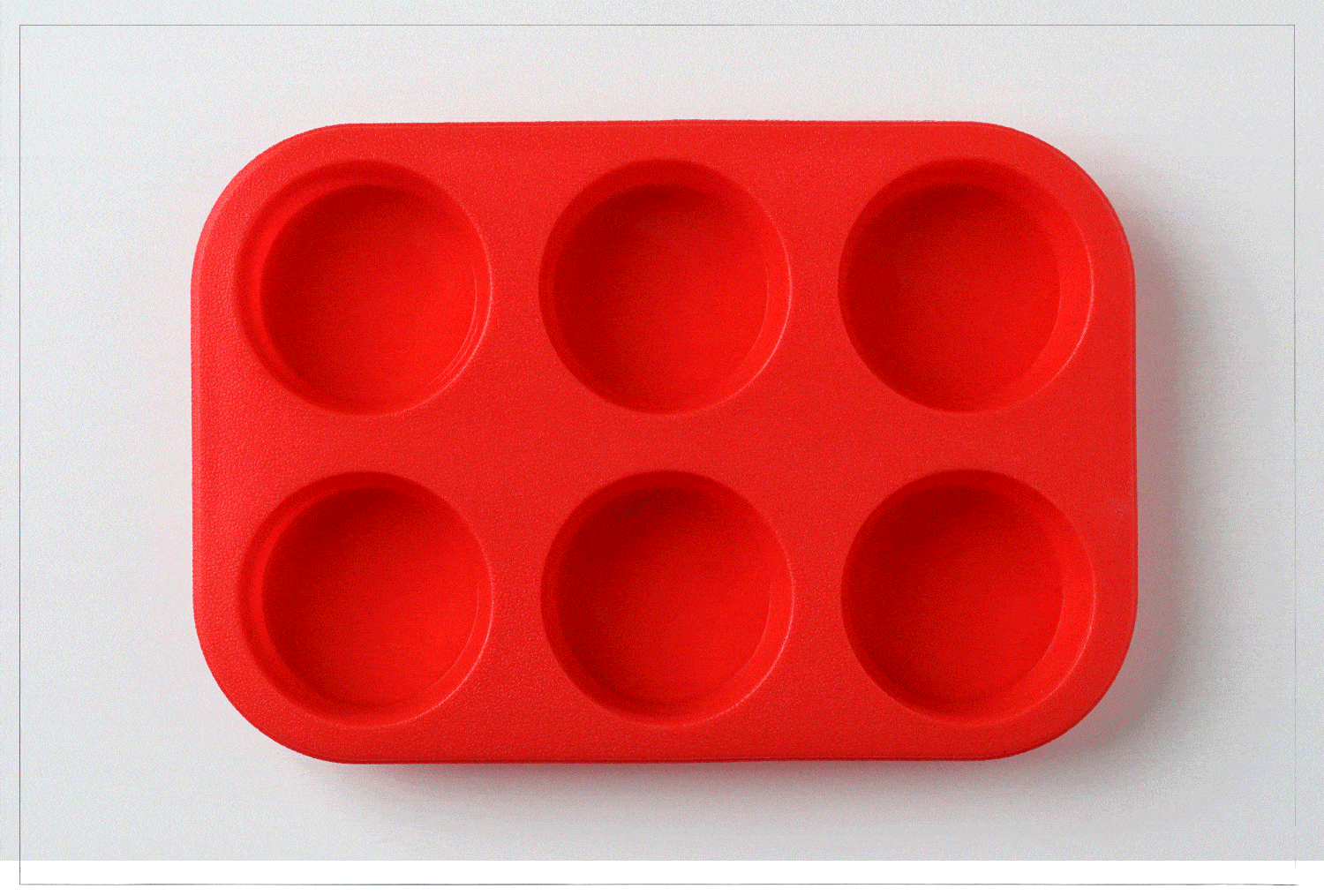
DIY Chalk Paint | Free Chalk Stencils For Kids
Make your own homemade chalk paint to decorate your sidewalk or use on a chalkboard!
How to Make an Epic Pillow Fort (and Printables)
Guest post by our friend Emily Gibson from Siege Media... Enjoy!
As we get into the middle of summer, we don’t always want to get outside where it’s too hot to enjoy ourselves. But, we still want to have fun!
Making a pillow fort is a great way to achieve the best of both worlds. Pillow forts are fun, low-cost activities that typically only require common household items to get started. All you need to do is gather sheets, blankets and decorations, then start building the indoor oasis of your dreams.
Here is a step-by-step guide on creating the ultimate fort:
Step 1: Gather Supplies
Collect blankets, pillows and sheets to serve as the walls and roof of your fort.
Step 2: Choose a Location
Try to pick a well-ventilated that is sunny but not too hot. You can also build the fort near a wall plug if you want to have an area to plug in lights or electronics.
Step 3: Build the Base
Choose a large, sturdy piece of furniture like a couch or chair to serve as the base of your fort. Arrange several smaller pieces of furniture around your base to serve as anchor points.
Step 4: Build the Roof
Secure a sheet or blanket to your base and to an anchor point, then continue to do so until you have a solid roof. Alternatively, you can make the roof of your fort by attaching the sheet or blanket to the wall with pushpins.
Step 5: Make the Walls
Fill in the gaps between the roof and the floor by laying blankets and sheets over the fort. For added security, secure them with pushpins.
Step 6: Add Personal Touches
Making your fort personal for you and your family can make it more fun to spend time inside. Bring in decorations such as lights, stuffed animals and rugs. Consider also making a fun, festive sign or bringing in your family’s favorite things to make the fort all your own and a sanctuary where you can have fun together as a family. For added whimsy and personalization, check out the following printables from Bestow.
Customizable Welcome Sign
Download this customizable welcome sign and give your fort its own, fun name.
Printable Night Sky
Print out these stars and planets to create a night sky in your fort. Hang them from the top of your fort or attach them to string lights to give yourself the sensation of being in space.
Printable Garden
Print out these fun garden plants and bugs to add a garden feeling to your fort. Attach them to the sides of your structure with tape or string.
Beach Day Garland
Print out this beach day garland to bring the fun feeling of a beach tent into your home. String the letters and marine animals together on a string and hang it in your fort to get yourself into a beachy mood.
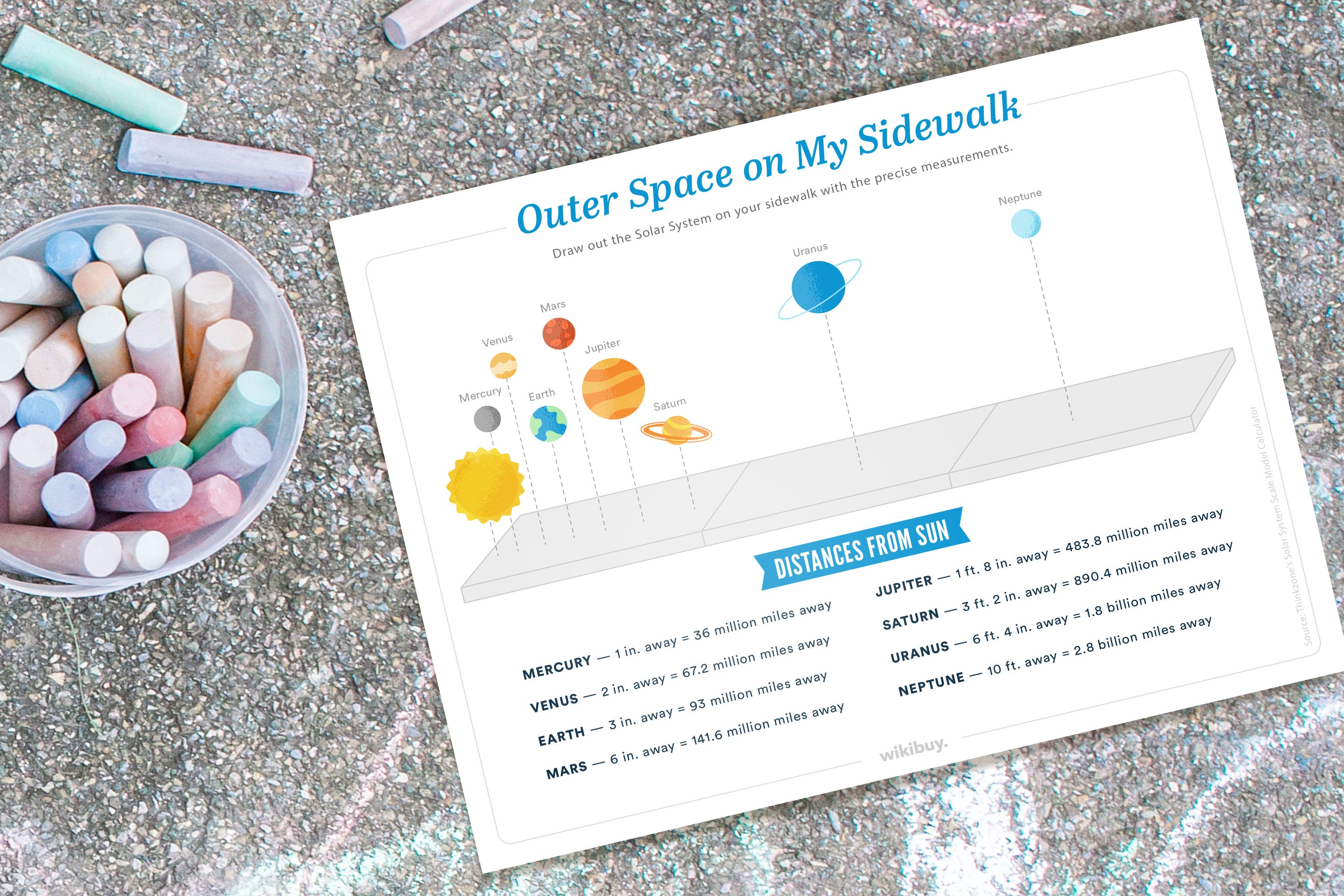
How To Create A Chalk Solar System On Your Sidewalk
Today we have a Guest Blog from our good friend, Matt Zdun - enjoy!
-----
As you scrape the bottom of the barrel looking for at-home activities to keep your kids entertained this summer, why not try bringing outer space to your sidewalk?
The recent SpaceX launch during the coronavirus pandemic taught us that we’re all pretty fascinated with space exploration, and we all could use a little distraction these days. If your kids love space, and they love chalk, they’ll love this fun and educational activity.
How to set it up
All you need is about 10 feet of sidewalk. In that 10 feet, you can create a solar system that is about 1.5 trillion times smaller than the actual solar system.
Start by tracing out the sun in yellow chalk. Then, using your tape measure or smartphone measuring app, trace out Mercury one inch away, Venus two inches away, Earth three inches away, and so on all the way up to Uranus about six feet away and Neptune 10 feet away.
Make it a fun learning experience
Be sure to write the names of the planets and the actual distances they are from the sun. This is a great way for your kids to visualize the scale of the solar system and get a feel for where the planets are.
Also be sure to draw the relative sizes of the planets correctly for the most accurate sidewalk chalk model. (For example, Jupiter should be a lot bigger than Mercury and Venus.)
Download this fun outer space chalk printable, as well as other free staycation ideas, provided by the team at Wikibuy.
